Related Research Articles

The Winkler Prins is a Dutch-language encyclopedia, founded by the Dutch poet and clergyman Anthony Winkler Prins (1817–1908) and published by Elsevier. It has run through nine printed editions; the first, issued in 16 volumes from 1870 to 1882, and the last, numbering 26 volumes, from 1990 to 1993. Winkler Prins has been the most distinguished printed encyclopedia in the Dutch language. Publisher Elsevier collaborated with the Microsoft Corporation to put the 1993 version plus any new additions onto CD-ROM in 1997 as the Dutch-language version of Encarta.

Opzij is a mainstream Dutch feminist monthly magazine. The title means "out of the way!"
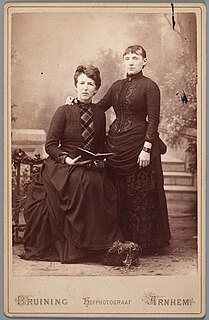
Titia Klasina Elisabeth van der Tuuk, commonly known as Titia van der Tuuk, was a Dutch feminist and socialist. She was born in 't Zandt, Groningen to a preacher and a writer of children's literature. She initially worked as a teacher, but had to give up her profession due to deafness and hostility toward her because she was an avowed atheist. From 1885 onward, she started translating foreign literature into Dutch and writing children's literature and historic novels. She was passionate in her activism for atheism, teetotalism, vegetarianism and pacifism. She often used the pseudonym Vitalis. She was never married and lived openly with her female partner. She died in Zeist, age 84.

The Deutsche Zeitung in den Niederlanden was a German-language nationwide newspaper based in Amsterdam, which was published during almost the entire occupation of the Netherlands in World War II from June 5, 1940 to May 5, 1945, the day of the German capitulation in the "Fortress Holland". Its objective was to influence the public opinion in the Netherlands, especially the one of the Germans in this country.

Wilhelmina Drucker was a Dutch politician and writer. One of the first Dutch feminists, she was also known under her pseudonyms Gipsy, Gitano, and E. Prezcier.
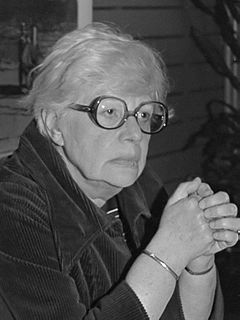
Wim Hora Adema was a Dutch author of children's literature and a feminist, notable for being the co-founder of Opzij, founded in 1972 as a radical feminist monthly magazine. She was one of the best-known women of the Dutch second wave of feminism.
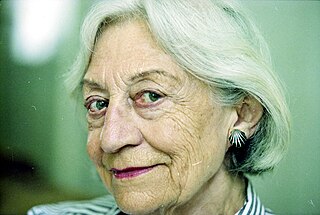
Wina Born-Meijer was a Dutch journalist. She is often named as de moeder van de Nederlandse gastronomie. She has written about a hundred cookbooks and countless articles in magazines, like Margriet and Avenue.

Daan Samson is a Dutch artist. His work deals with taboos, embarrassments and achievements of the welfare state.

Viva is a weekly fashion magazine for women, published in the Netherlands.

Man Vrouw Maatschappij was a Dutch feminist action group, founded by Joke Smit en Hedy d'Ancona.
Beatrijs: Katholiek weekblad voor de vrouw was a Dutch Catholic weekly magazine for women. Founded in 1939, it was taken over by Libelle in 1967.
Moeder was a Dutch women's magazine, published from 1934 to 1974; from 1961 on the magazine was called De Prinses. Edited by Jan Waterink, a preacher and professor and later rector at the VU University Amsterdam, it was a Christian weekly offering practical advice to housewives, combined with amusement and religious content. The magazine had a neo-Calvinist stance.

Henk van der Meijden is a Dutch journalist and producer of theater and circus acts. Known as the "godfather" of Dutch gossip journalism, he founded a weekly gossip magazine, Privé, and edits the gossip pages of De Telegraaf.

Libelle Dutch: Dragonfly) is a Flemish weekly lifestyle and women's magazine based in Mechelen, Belgium. The magazine is the spin-off the magazine with the same name, Libelle, published in the Netherlands.

Libelle is a Dutch language weekly women's magazine published in Amsterdam, Netherlands. It has been in circulation since 1934.
Het Rijk der Vrouw was a Belgian women's magazine published between 1925 and 1990.
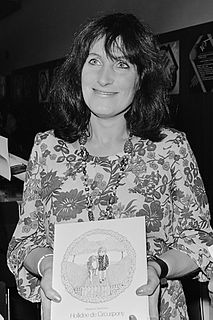
Margriet Heymans is a Dutch writer and illustrator of children's literature.
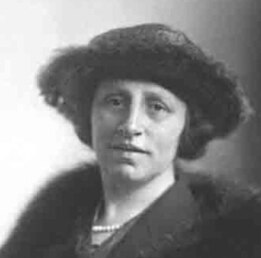
Elisabeth "Betsy" Bakker-Nort was a Dutch feminist, lawyer, and politician who served as a member of the House of Representatives for the Free-thinking Democratic League (VDB) from 1922 to 1942. Born in Groningen, she became involved with the feminist movement in 1894, joining the Dutch women's suffrage association, Vereeniging voor Vrouwenkiesrecht (VVVK), where she was mentored by Aletta Jacobs, one of the pioneering activists of the 19th century. At age 34, Bakker-Nort started studying law at the University of Groningen, after realising that the fight for women's rights required a thorough understanding of the law. In the 1922 general election, the first in which women were allowed to vote, she received enough votes to be elected to parliament and became the VDB's first female representative. She was re-elected four times and during her time in the chamber mainly argued the case for more women's rights with respect to marriage law and labour law. She was active internationally as well, taking a leading role in preparing the International Woman Suffrage Alliance's actions for the 1930 League of Nations conference on international law. In 1933, she acted as a judge in a counter-trial in London of the arson case of the Reichstag fire. After the German invasion in May 1940, Bakker-Nort did not return to the House. From 1941 she was interned at Westerbork transit camp and a camp in Barneveld, before the Nazis moved her in September 1944 to the Theresienstadt Ghetto in Bohemia. She was liberated in June 1945. She died the following year.

Elisabeth Jacoba den Uyl-van Vessem was a Dutch activist, politician, and writer, involved with the PvdA, the Dutch social-democratic party. She was the wife of politician Joop den Uyl, and was socially and politically active. She wrote for magazines including Opzij, Vrij Nederland, Margriet, and for Het Parool.

Maaike Meijer is a Dutch literary scholar. She is a Professor emeritus of Maastricht University.
References
- ↑ Jacco Hakfoort; Jürgen Weigand. "Magazine Publishing - A Quiet Life ?The Dutch Market for Consumer Magazines" (PDF). CPB Netherlands Bureau for Economic Policy Analysis. The Hague. Retrieved 28 June 2016.
- ↑ Gijs van Wulfen (2013). "What's Your Innovation Focus?" (Book chapter). Innovation Management. Retrieved 16 May 2015.
- ↑ In the 1970s the column provided the material for a sociological investigation into shifting standards for morality and civility. See El 46.
- 1 2 3 Hülsken 59.
- ↑ Roy Sprangers (25 October 2012). "Eerste editie van Weekblad Donald Duck". Lsgeschiedenis (in Dutch). Retrieved 31 May 2014.
- 1 2 3 Hülsken 61.
- ↑ Meijer 47.
- ↑ Meijer 310.
- ↑ Meijer 180.
- 1 2 Heleen Crul (5 August 2009). "Margriet emancipeerde vrouwen". de Volkskrant . Dutch. Retrieved 30 May 2014.
- ↑ Meijer 169, 320.
- ↑ Raad voor Maatschappelijke Ontwikkeling 50.
- ↑ Kempen 404.
- ↑ "Concentration and diversity of the Dutch media in 2001" (PDF). The Netherlands Media Authority. September 2002. Archived from the original (PDF) on 7 February 2015. Retrieved 9 May 2015.
- ↑ David Machin; Theo Van Leeuwen (17 May 2007). Global Media Discourse: A Critical Introduction. Routledge. p. 39. ISBN 978-1-134-24090-6 . Retrieved 1 May 2015.
- ↑ "Ten things you didn't know about prime minister Mark Rutte". Dutch News. 3 November 2015. Retrieved 14 March 2017.
Bibliography
- El, Carla van (2002). Figuraties en verklaringen: stijlgebonden schoolvorming in de Nederlandse sociologie na 1968. Het Spinhuis. ISBN 9789052600109.
- Hülsken, Marloes (2010). Kiezen voor kinderen?: vrouwentijdschriften en hun lezeressen over het katholieke huwelijksleven, 1950-1975. Verloren. ISBN 9789087041731.
- Kempen, Ric van (2006). "Relatiemedia dragen ook events en incentives: Geen incidentele uitspatting, maar strategische keuze". In Sak van den Boom, Jan Mars (ed.). Relatiemedia (in Dutch). Pearson. pp. 395–421. ISBN 9789043011327.
- Meijer, Irene Costera (1996). Het persoonlijke wordt politiek: feministische bewustwording in Nederland, 1965-1980. Het Spinhuis. ISBN 9789055890521.
- Raad voor Maatschappelijke Ontwikkeling (2001). Aansprekend opvoeden (in Dutch). RMO. ISBN 9789012093194.